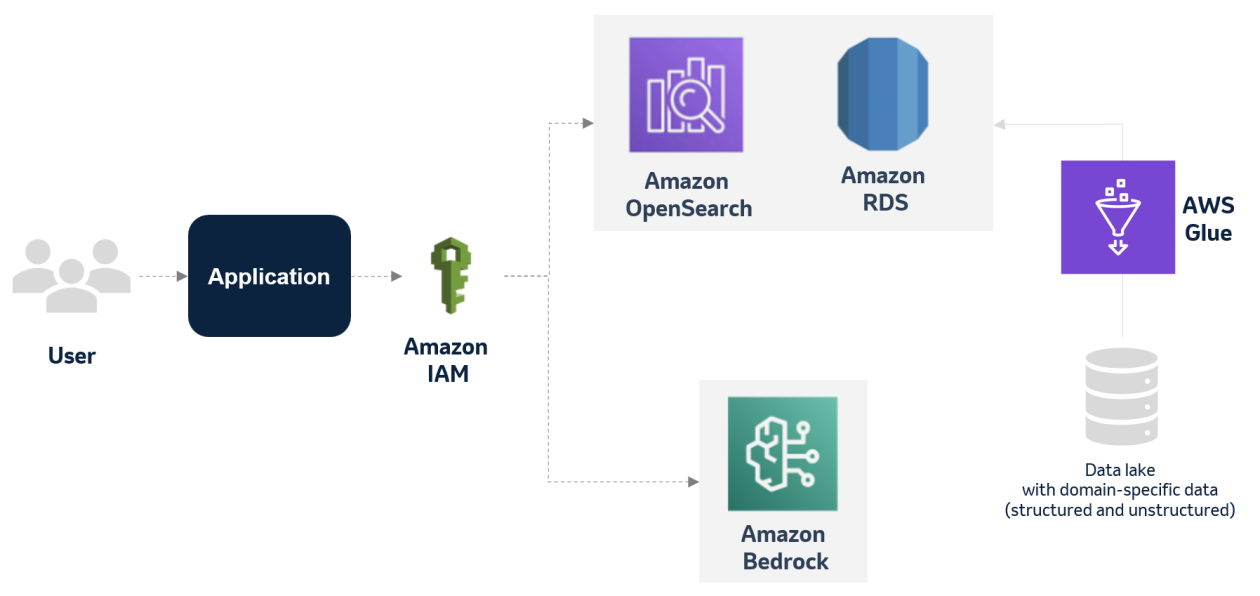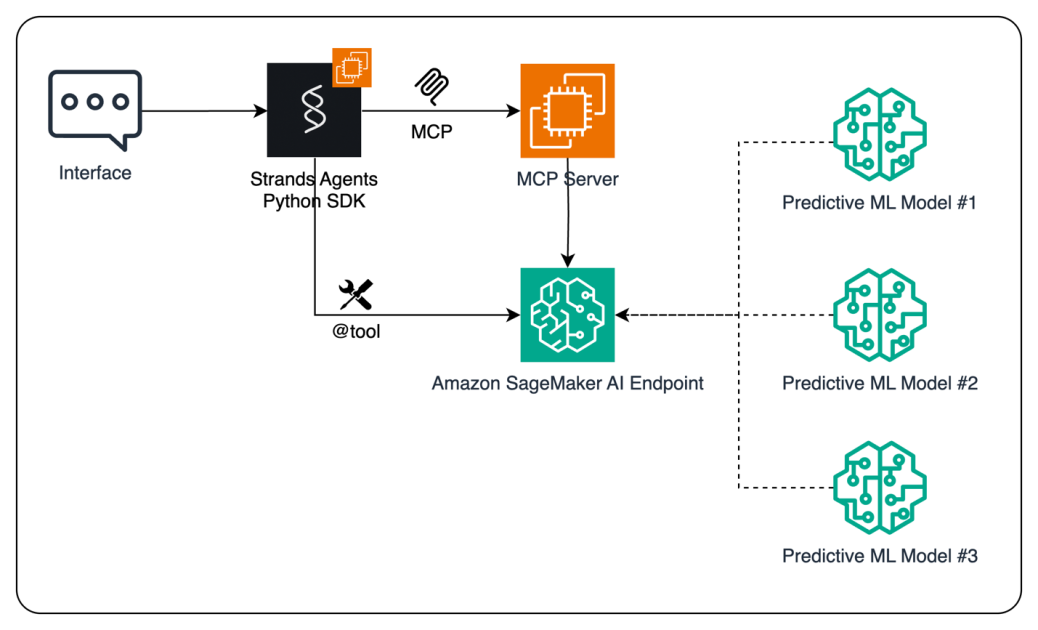Accelerated PyTorch inference with torch.compile on AWS Graviton processors
Originally PyTorch used an eager mode where each PyTorch operation that forms the model is run independently as soon as it’s reached. PyTorch 2.0 introduced torch.compile to speed up PyTorch code over the default eager mode. In contrast to eager mode, the torch.compile pre-compiles the entire model into a single graph in a manner that’s optimal for […]

Originally PyTorch used an eager mode where each PyTorch operation that forms the model is run independently as soon as it’s reached. PyTorch 2.0 introduced torch.compile to speed up PyTorch code over the default eager mode. In contrast to eager mode, the torch.compile pre-compiles the entire model into a single graph in a manner that’s optimal for running on a given hardware platform. AWS optimized the PyTorch torch.compile feature for AWS Graviton3 processors. This optimization results in up to 2x better performance for Hugging Face model inference (based on geomean of performance improvement for 33 models) and up to 1.35x better performance for TorchBench model inference (geomean of performance improvement for 45 models) compared to the default eager mode inference across several natural language processing (NLP), computer vision (CV), and recommendation models on AWS Graviton3-based Amazon EC2 instances. Starting with PyTorch 2.3.1, the optimizations are available in torch Python wheels and AWS Graviton PyTorch deep learning container (DLC).
In this blog post, we show how we optimized torch.compile performance on AWS Graviton3-based EC2 instances, how to use the optimizations to improve inference performance, and the resulting speedups.
Why torch.compile and what’s the goal?
In eager mode, operators in a model are run immediately as they are encountered. It’s easier to use, more suitable for machine learning (ML) researchers, and hence is the default mode. However, eager mode incurs runtime overhead because of redundant kernel launch and memory read overhead. Whereas in torch compile mode, operators are first synthesized into a graph, wherein one operator is merged with another to reduce and localize memory reads and total kernel launch overhead.
The goal for the AWS Graviton team was to optimize torch.compile backend for Graviton3 processors. PyTorch eager mode was already optimized for Graviton3 processors with Arm Compute Library (ACL) kernels using oneDNN (also known as MKLDNN). So, the question was, how to reuse those kernels in torch.compile mode to get the best of graph compilation and the optimized kernel performance together?
Results
The AWS Graviton team extended the torch inductor and oneDNN primitives that reused the ACL kernels and optimized compile mode performance on Graviton3 processors. Starting with PyTorch 2.3.1, the optimizations are available in the torch Python wheels and AWS Graviton DLC. Please see the Running an inference section that follows for the instructions on installation, runtime configuration, and how to run the tests.
To demonstrate the performance improvements, we used NLP, CV, and recommendation models from TorchBench and the most downloaded NLP models from Hugging Face across Question Answering, Text Classification, Token Classification, Translation, Zero-Shot Classification, Translation, Summarization, Feature Extraction, Text Generation, Text2Text Generation, Fill-Mask, and Sentence Similarity tasks to cover a wide variety of customer use cases.
We started with measuring TorchBench model inference latency, in milliseconds (msec), for the eager mode, which is marked 1.0 with a red dotted line in the following graph. Then we compared the improvements from torch.compile for the same model inference, the normalized results are plotted in the graph. You can see that for the 45 models we benchmarked, there is a 1.35x latency improvement (geomean for the 45 models).

Image 1: PyTorch model inference performance improvement with torch.compile on AWS Graviton3-based c7g instance using TorchBench framework. The reference eager mode performance is marked as 1.0. (higher is better)
Similar to the preceding TorchBench inference performance graph, we started with measuring the Hugging Face NLP model inference latency, in msec, for the eager mode, which is marked 1.0 with a red dotted line in the following graph. Then we compared the improvements from torch.compile for the same model inference, the normalized results are plotted in the graph. You can see that for the 33 models we benchmarked, there is around 2x performance improvement (geomean for the 33 models).

Image 2: Hugging Face NLP model inference performance improvement with torch.compile on AWS Graviton3-based c7g instance using Hugging Face example scripts. The reference eager mode performance is marked as 1.0. (higher is better)
Running an inference
Starting with PyTorch 2.3.1, the optimizations are available in the torch Python wheel and in AWS Graviton PyTorch DLC. This section shows how to run inference in eager and torch.compile modes using torch Python wheels and benchmarking scripts from Hugging Face and TorchBench repos.
To successfully run the scripts and reproduce the speedup numbers mentioned in this post, you need an instance from the Graviton3 family (c7g/r7g/m7g/hpc7g) of hardware. For this post, we used the c7g.4xl (16 vcpu) instance. The instance, the AMI details, and the required torch library versions are mentioned in the following snippet.
The generic runtime tunings implemented for eager mode inference are equally applicable for the torch.compile mode, so, we set the following environment variables to further improve the torch.compile performance on AWS Graviton3 processors.
TorchBench benchmarking scripts
TorchBench is a collection of open source benchmarks used to evaluate PyTorch performance. We benchmarked 45 models using the scripts from the TorchBench repo. Following code shows how to run the scripts for the eager mode and the compile mode with inductor backend.
On successful completion of the inference runs, the script stores the results in JSON format. The following is the sample output:
Hugging Face benchmarking scripts
Google T5 Small Text Translation model is one of the around 30 Hugging Face models we benchmarked. We’re using it as a sample model to demonstrate how to run inference in eager and compile modes. The additional configurations and APIs required to run it in compile mode are highlighted in BOLD. Save the following script as google_t5_small_text_translation.py .
Run the script with the following steps.
On successful completion of the inference runs, the script prints the torch profiler output with the latency breakdown for the torch operators. The following is the sample output from torch profiler:
What’s next
Next, we’re extending the torch inductor CPU backend support to compile Llama model, and adding support for fused GEMM kernels to enable torch inductor operator fusion optimization on AWS Graviton3 processors.
Conclusion
In this tutorial, we covered how we optimized torch.compile performance on AWS Graviton3-based EC2 instances, how to use the optimizations to improve PyTorch model inference performance, and demonstrated the resulting speedups. We hope that you will give it a try! If you need any support with ML software on Graviton, please open an issue on the AWS Graviton Technical Guide GitHub.
About the Author
 Sunita Nadampalli is a Software Development Manager and AI/ML expert at AWS. She leads AWS Graviton software performance optimizations for AI/ML and HPC workloads. She is passionate about open source software development and delivering high-performance and sustainable software solutions for SoCs based on the Arm ISA.
Sunita Nadampalli is a Software Development Manager and AI/ML expert at AWS. She leads AWS Graviton software performance optimizations for AI/ML and HPC workloads. She is passionate about open source software development and delivering high-performance and sustainable software solutions for SoCs based on the Arm ISA.



















![[PRO Tips] Use the BCG matrix to help you analyze the current situation, product positioning, and formulate strategies](https://i.scdn.co/image/ab6765630000ba8a165b48c48c4321b36a1df7b9?#)
![[Business Talk] BYD's Hiring Standards: A Reflection of China's Competitive Job Market](https://i.scdn.co/image/ab6765630000ba8a1a1e0af3aefae3a685793e7c?#)
![[PRO Tips] What is ESG? How is it different from CSR and SDGs? 3 keywords that companies and investors should know](https://i.scdn.co/image/ab6765630000ba8a76dbe129993a62e85226c2b4?#)
![[Business Talk] Elon Musk](https://i.scdn.co/image/ab6765630000ba8ac91eb094519def31d2b67898?#)


















